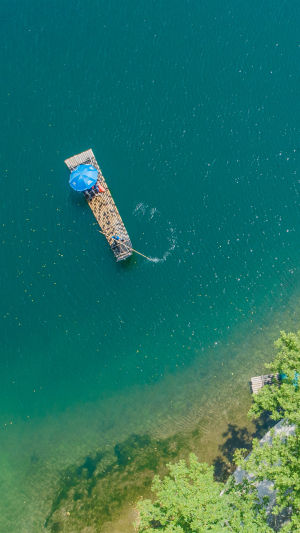A raft, that is, a raft made of long wood, is a simple means of water transportation.
Most of the materials are the branches of tall trees.
Archimedes's law says that when the weight of an object is less than the weight of the boiling water it discharges, it floats on the water.
As long as the volume of the iron ship is large enough that the weight of the boiling water it discharges is greater than its own weight, the iron ship will not sink into the water.
There is a lot of space inside the ship, which takes up a lot of adult volume, so that the weight of the boiling water (the buoyancy) is far greater than the weight of the ship, so the ship does not sink.
In addition, the density of trees is also less than that of water.
So how to make a bamboo raft?
The single-person bamboo raft uses about 10-15 large bamboos, double the double-person bamboo raft, and use double-layer bamboo to increase buoyancy.
The main results are as follows:
1. In the production of bamboo rafts, bamboo materials are very fastidious.
First of all, bamboo must be made of older bamboo (the surface of the bamboo pole is yellowish), straight, thick and without rupture.
Try to choose winter bamboo, resist the selected bamboo, remove the branches and leaves, leaving a thicker part (note that the bamboo tube must not be damaged).
2. Cut the cut bamboo into a suitable length with a cleaver.
3. After the main material of the bamboo raft is ready, prepare the auxiliary material.
Three to four sturdy, thinner bamboos are needed for the supporting structure of the raft. (only if the diameter is about 5 cm and the hardness is high enough).
4. The prepared bamboo is neatly arranged on the flat floor.
5. After the arrangement, put away part of the bamboo material, leave about 3-4 bamboo materials, and fix the bamboo raft skeleton with a rope at right angles to the bamboo material, one every 1 meter.
6. Fix the bracket and bamboo with rope, and a bamboo raft is born.
Put the bamboo raft in shallow water for buoyancy test, otherwise it will be life-threatening.
If the buoyancy is not enough, it is necessary to increase the buoyancy auxiliary blocks, such as large foam plates, pneumatic tires, airtight empty buckets, etc.





